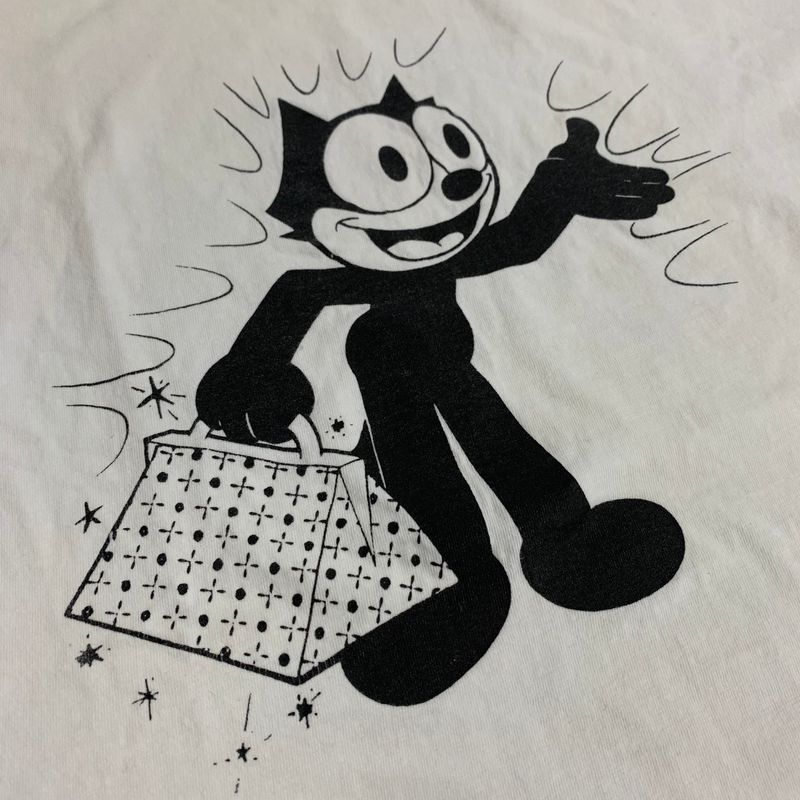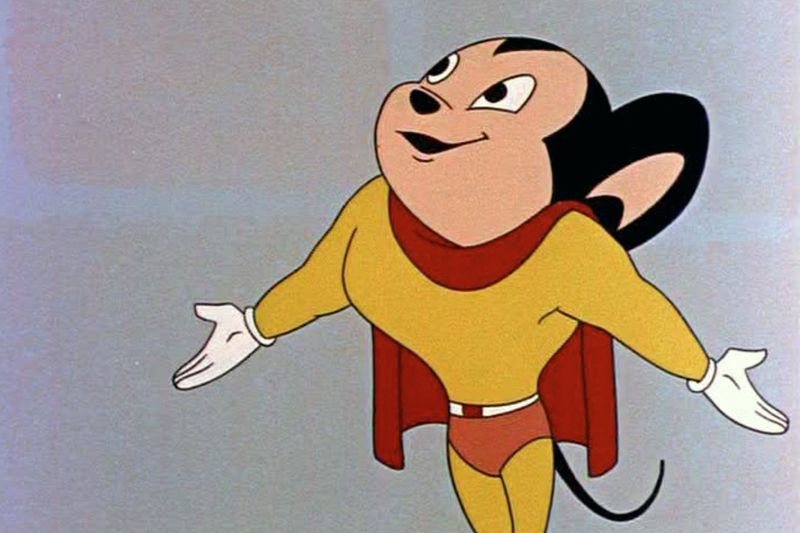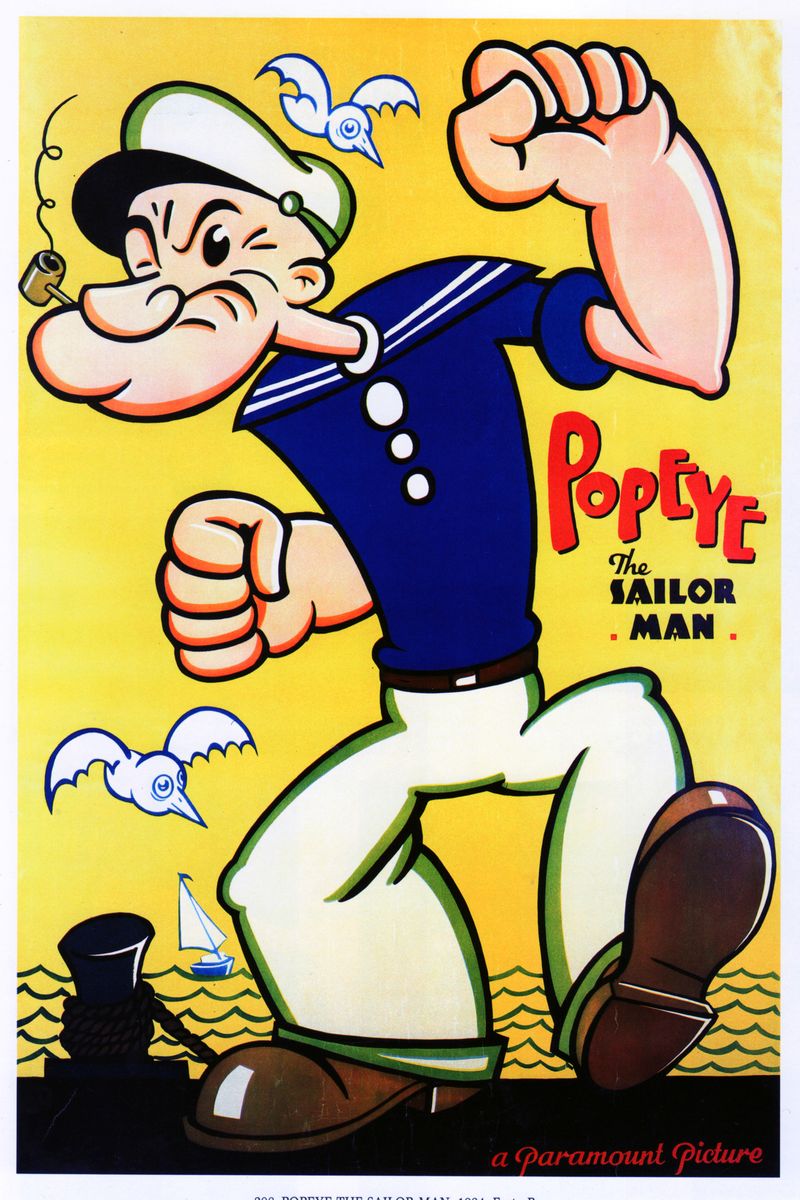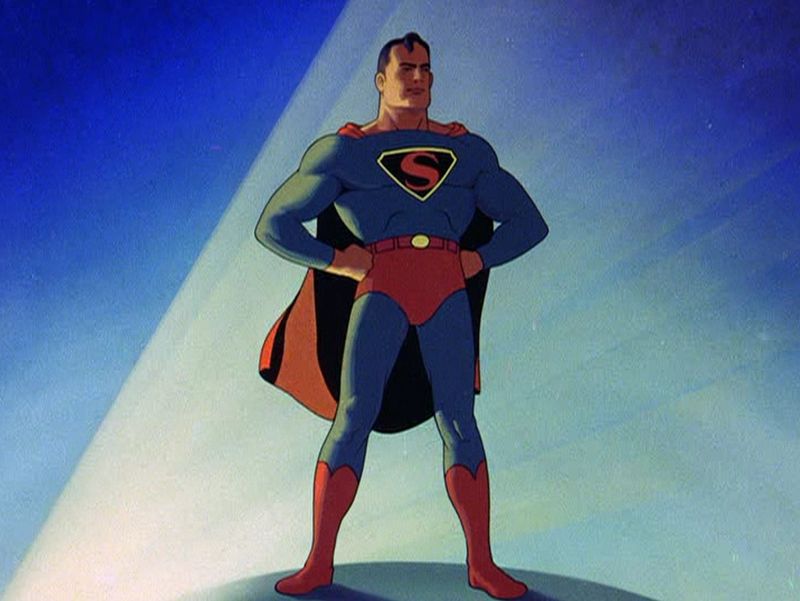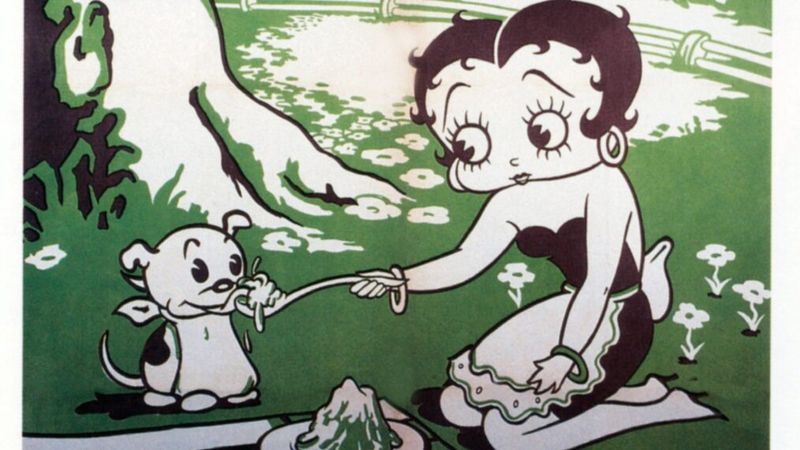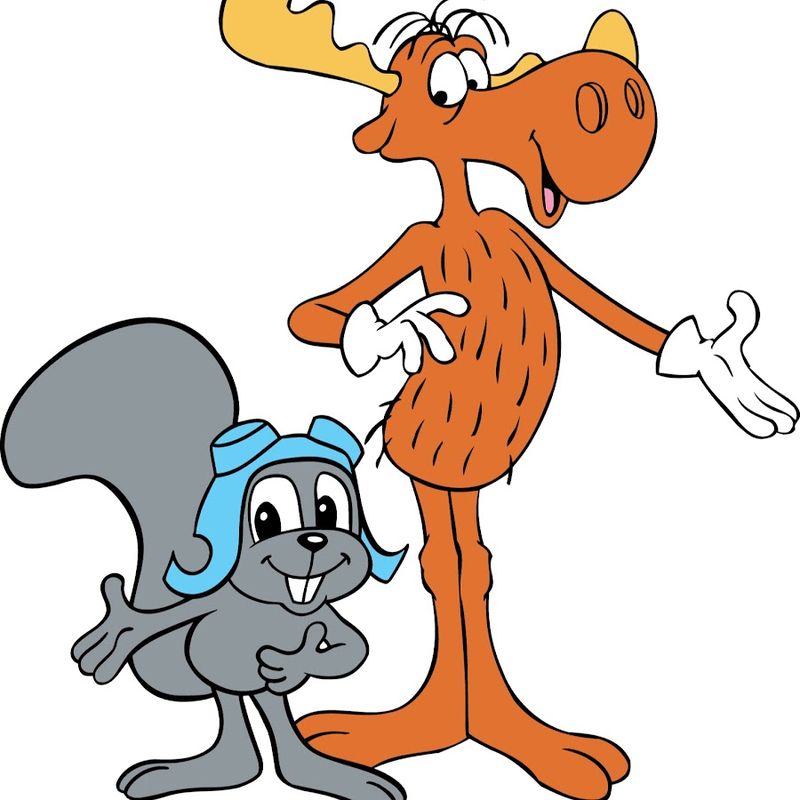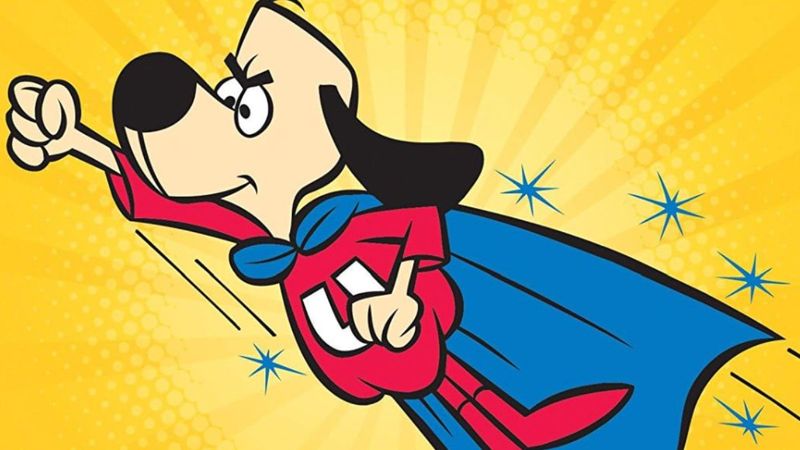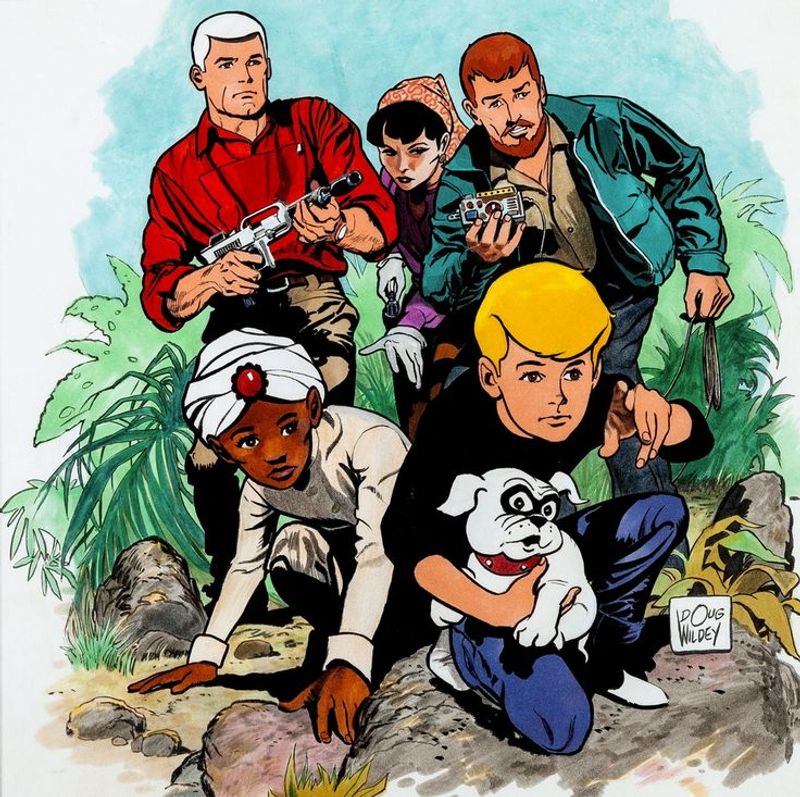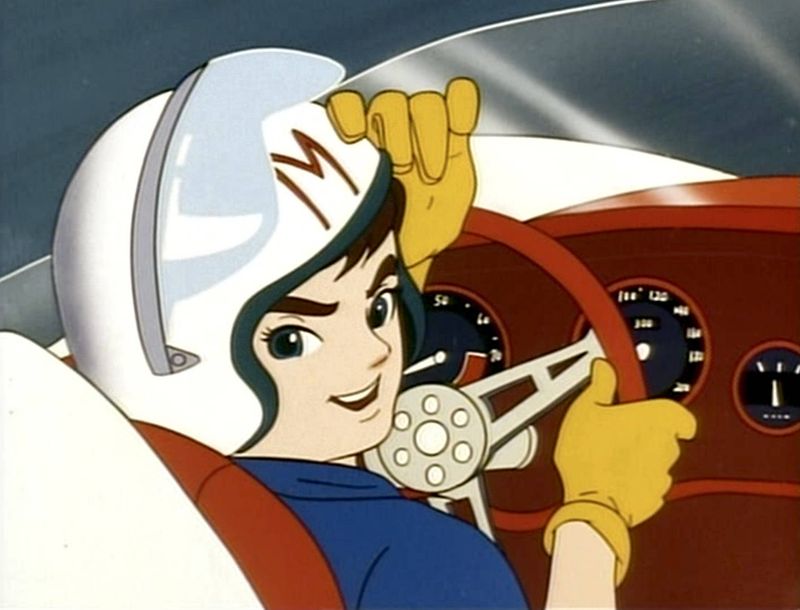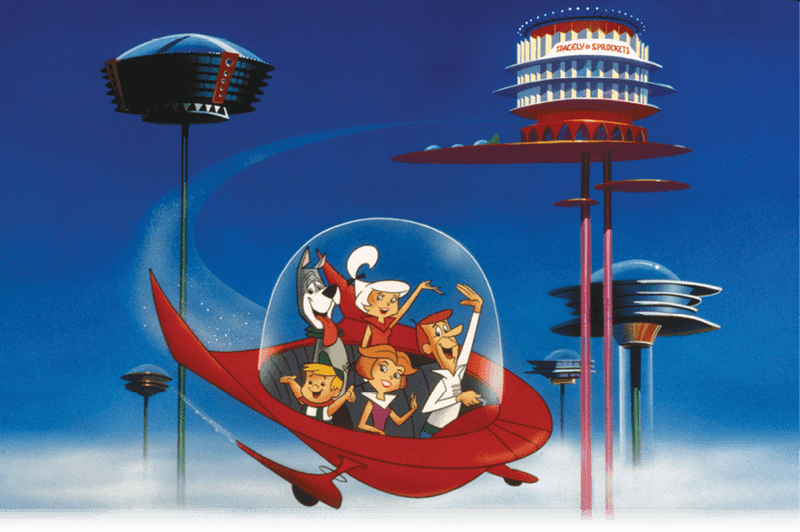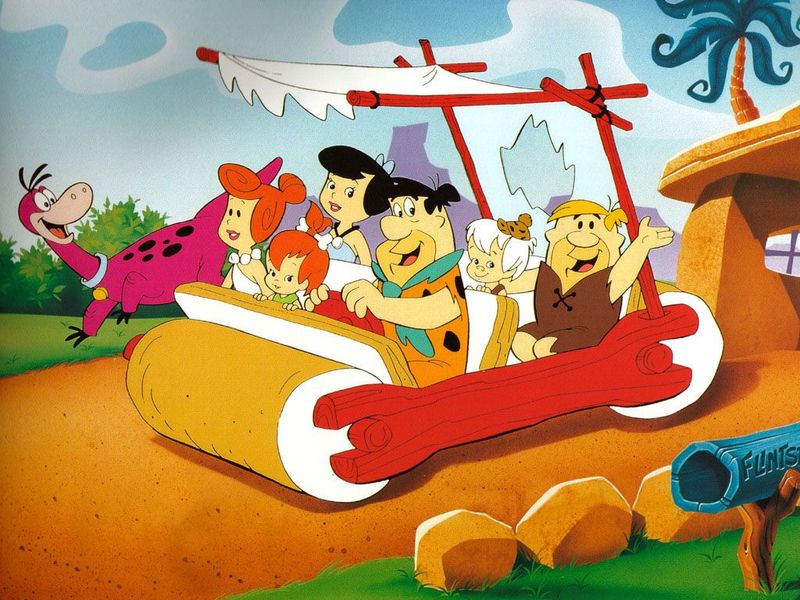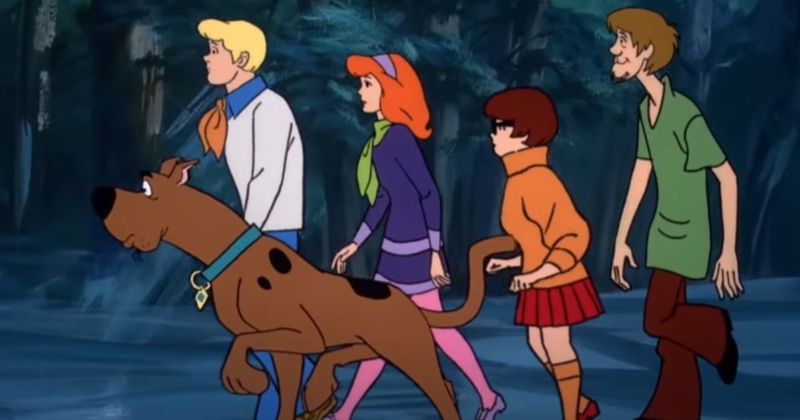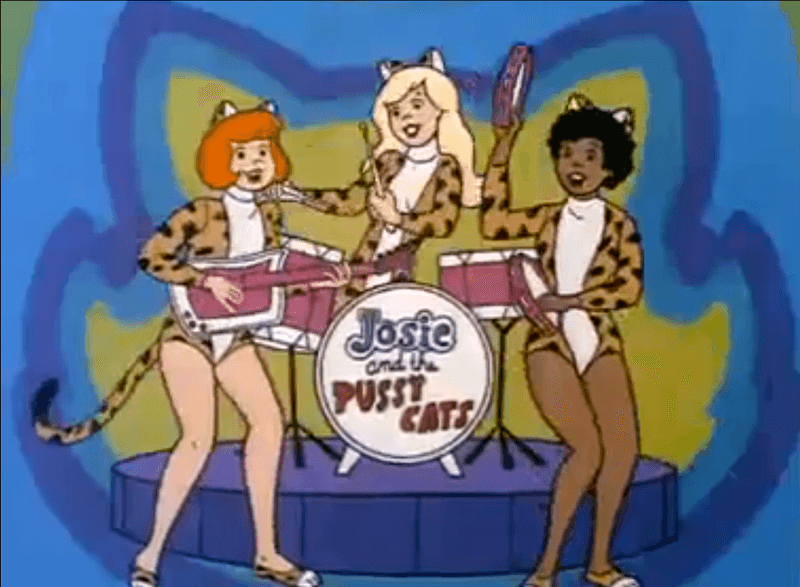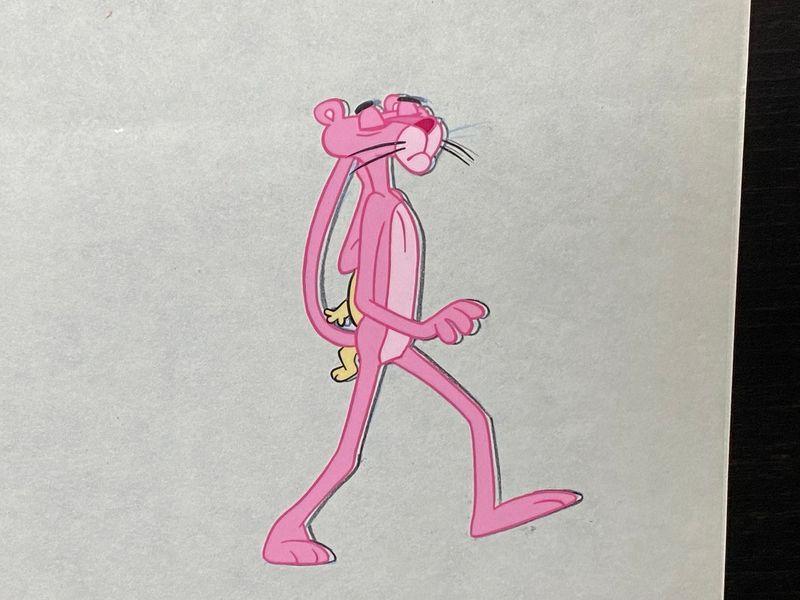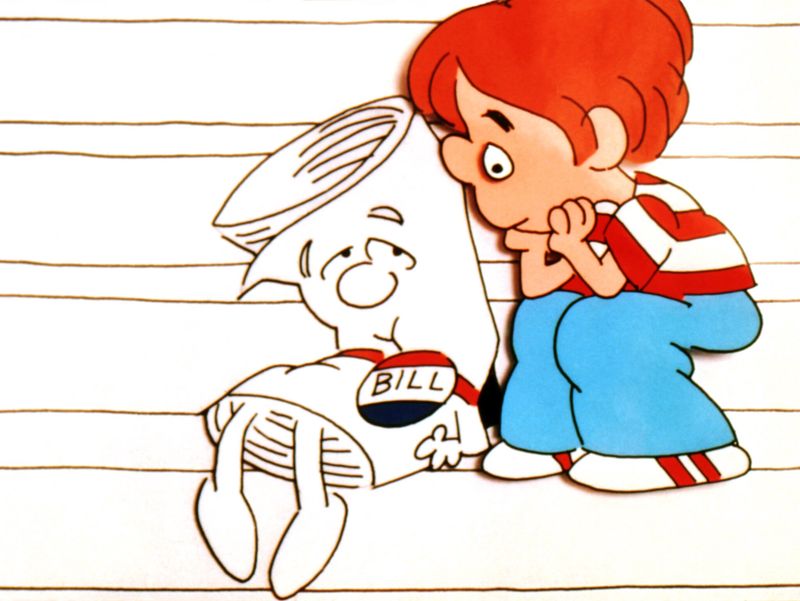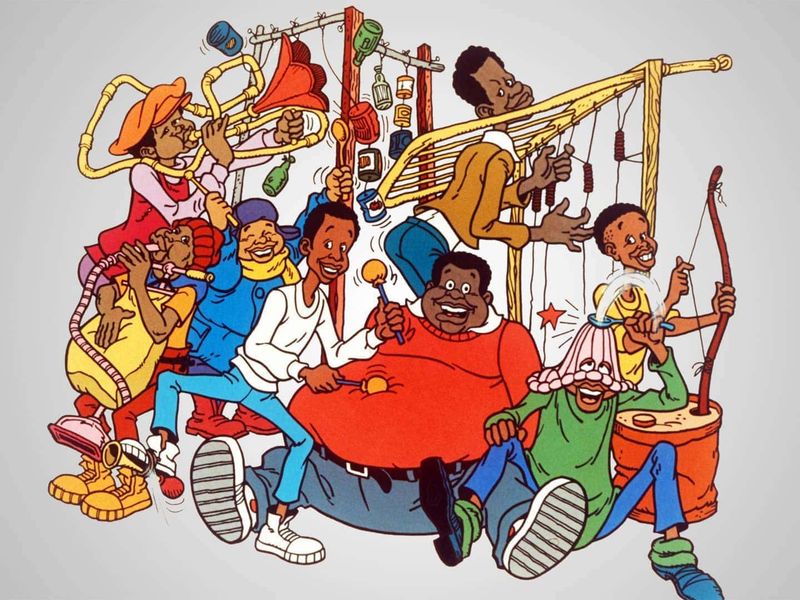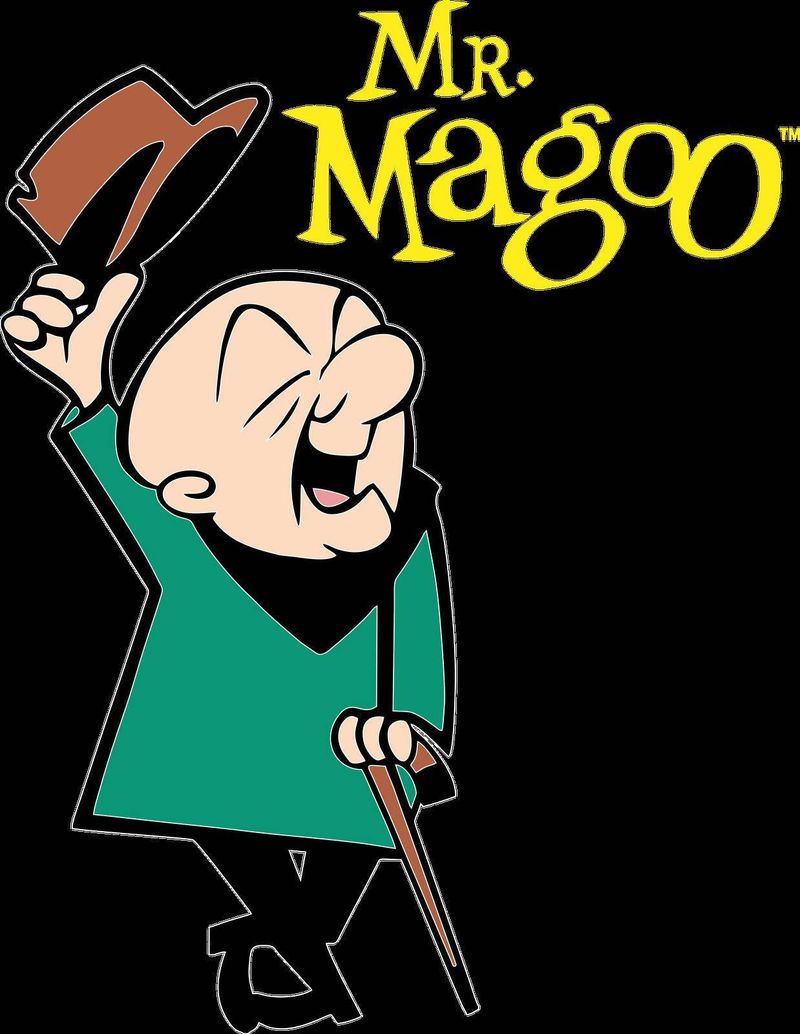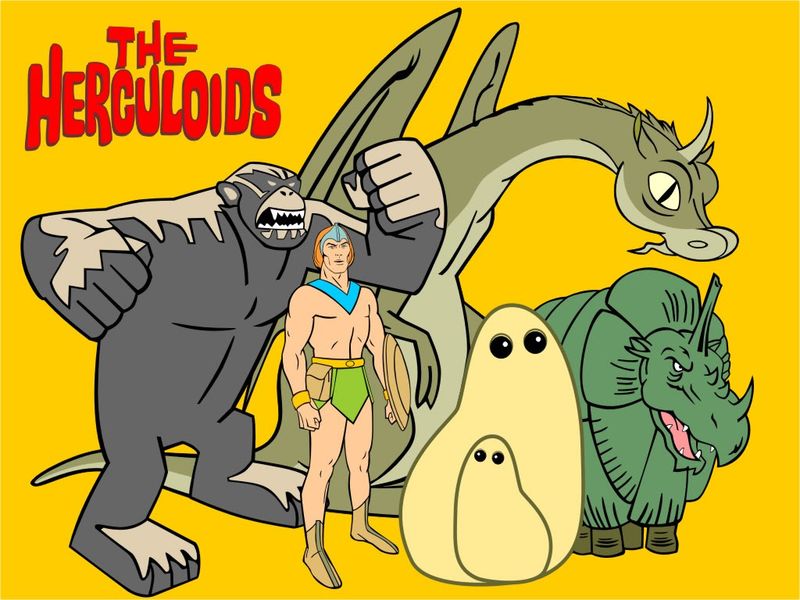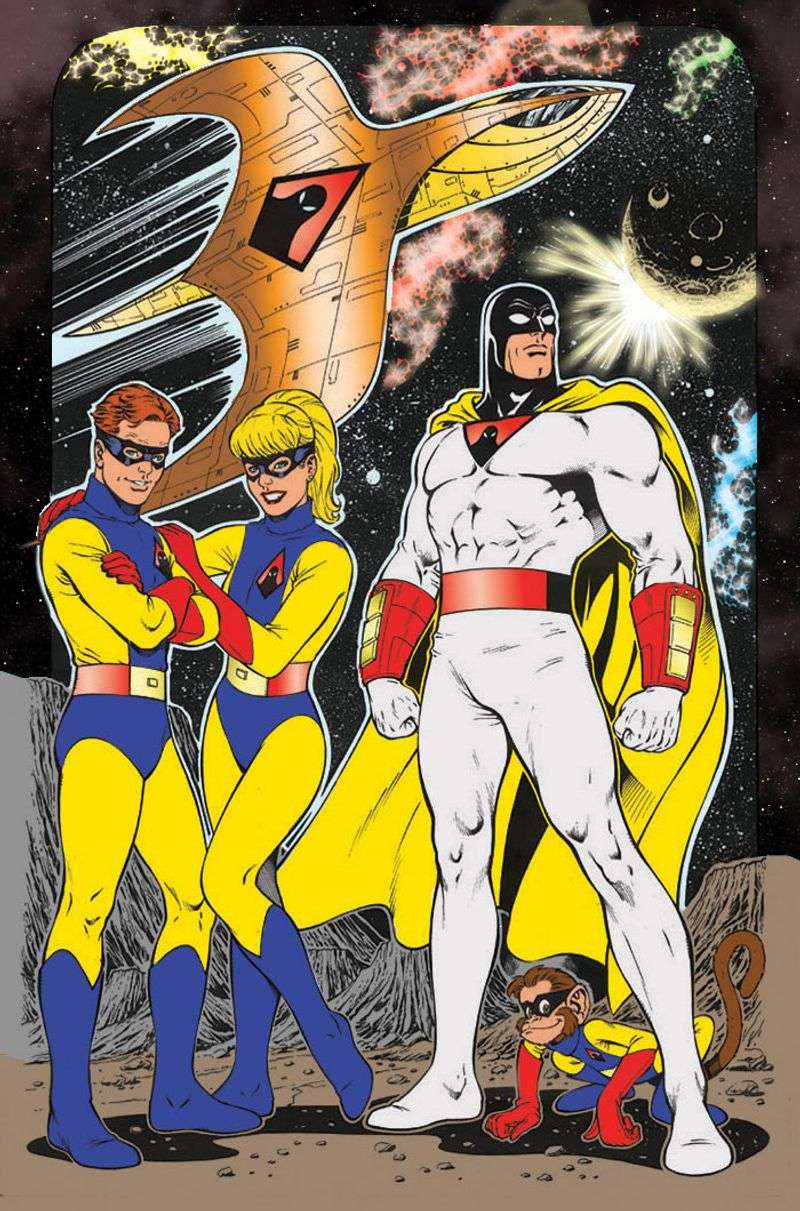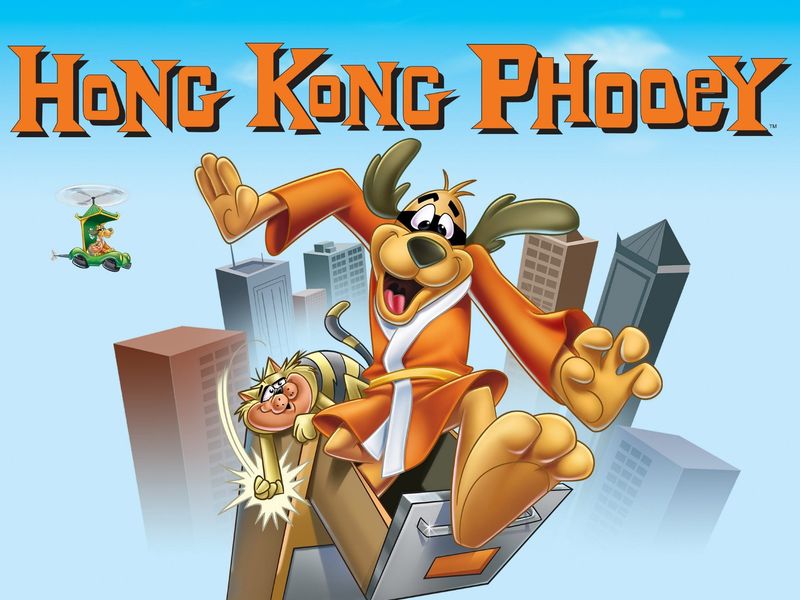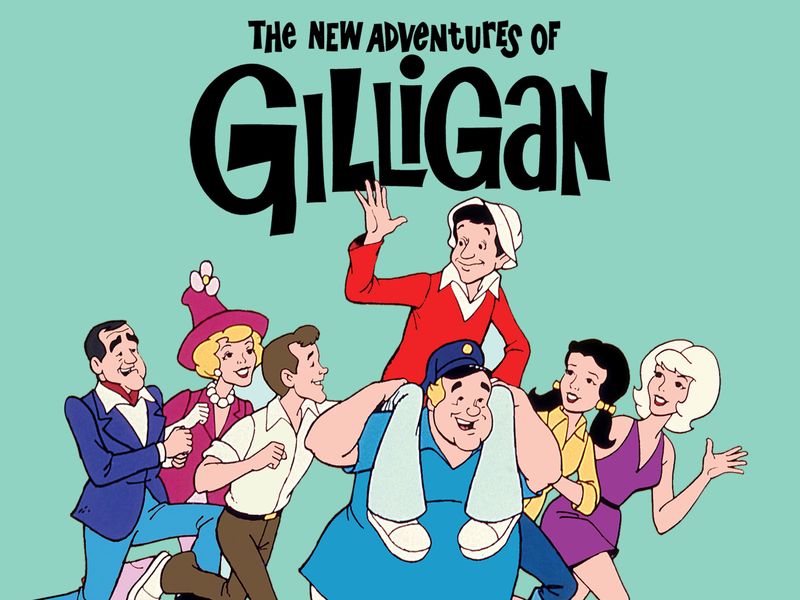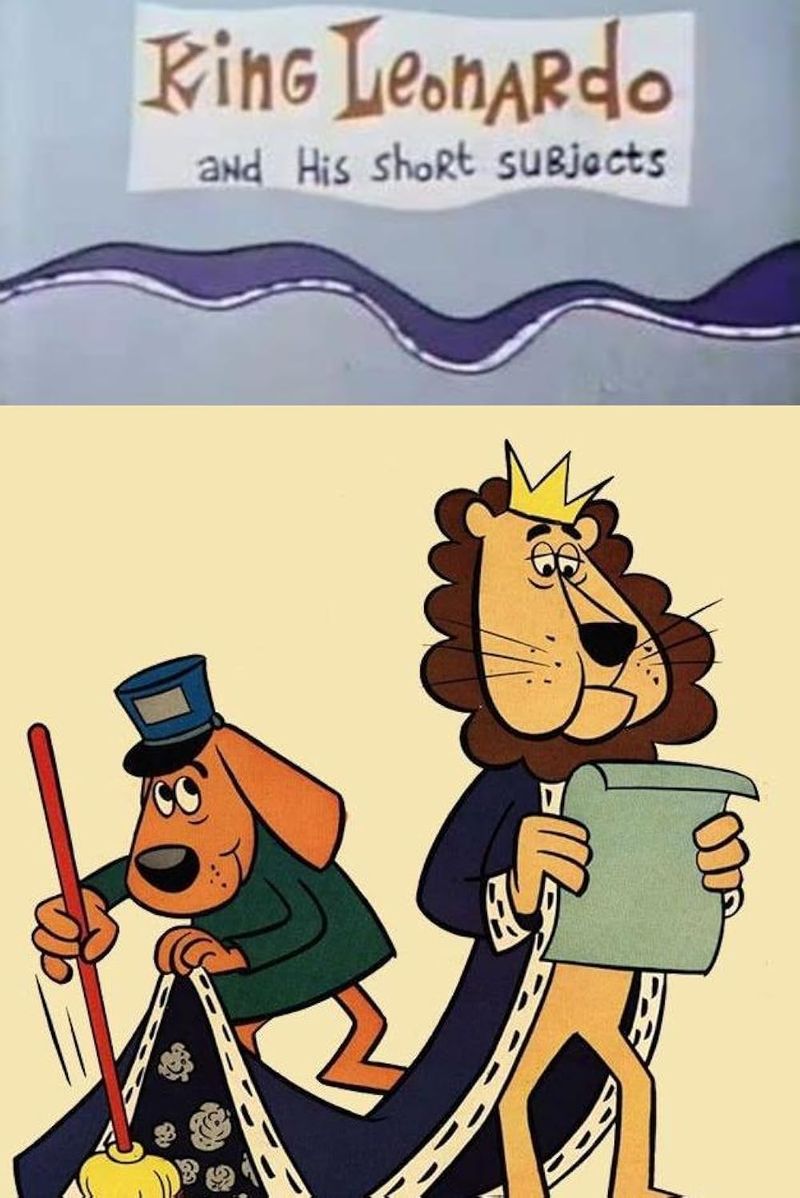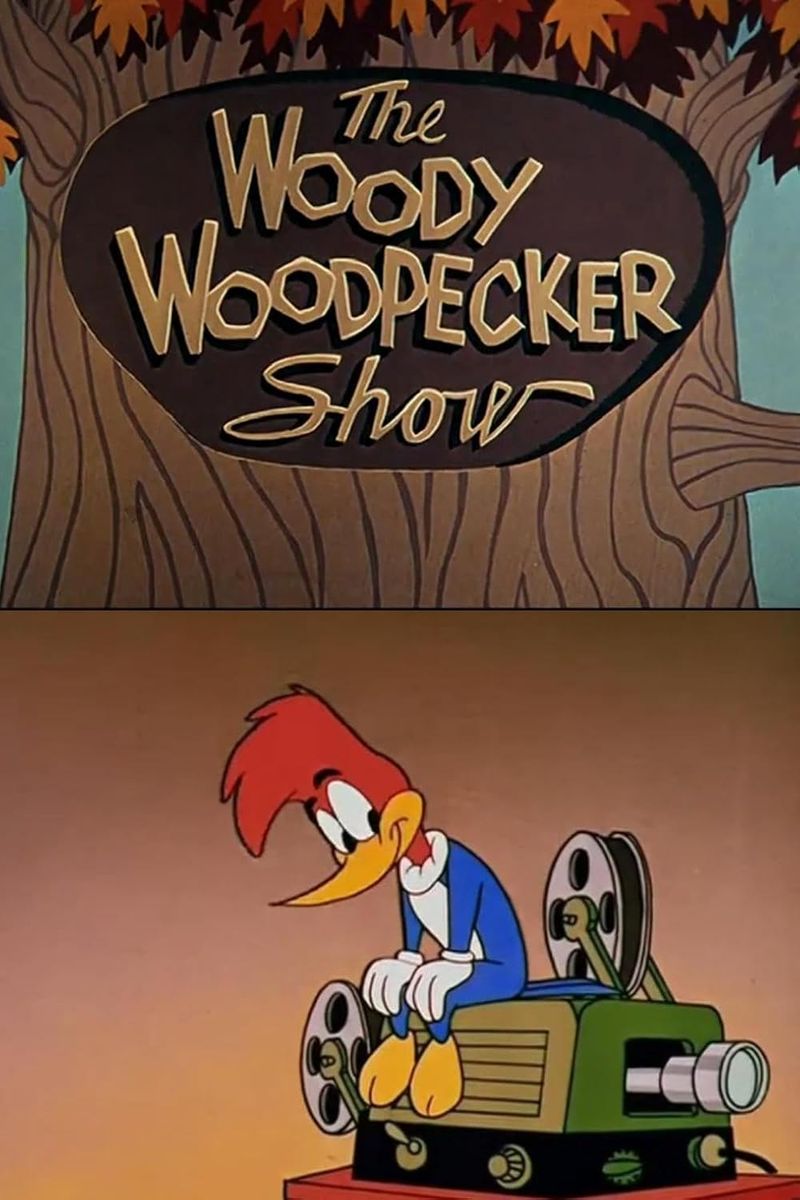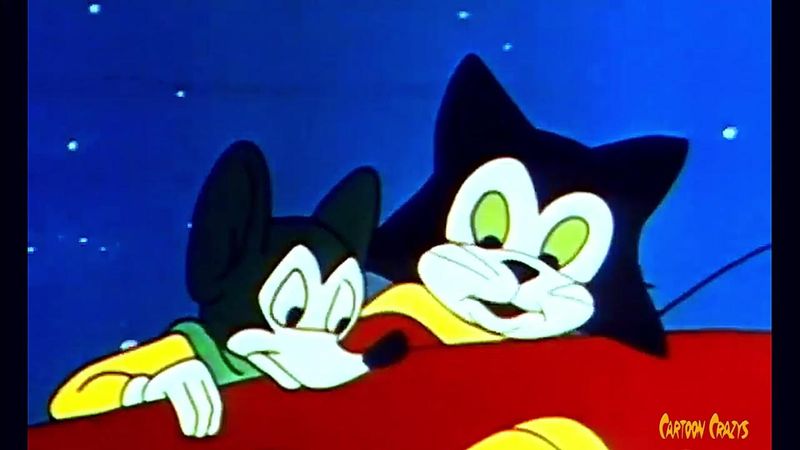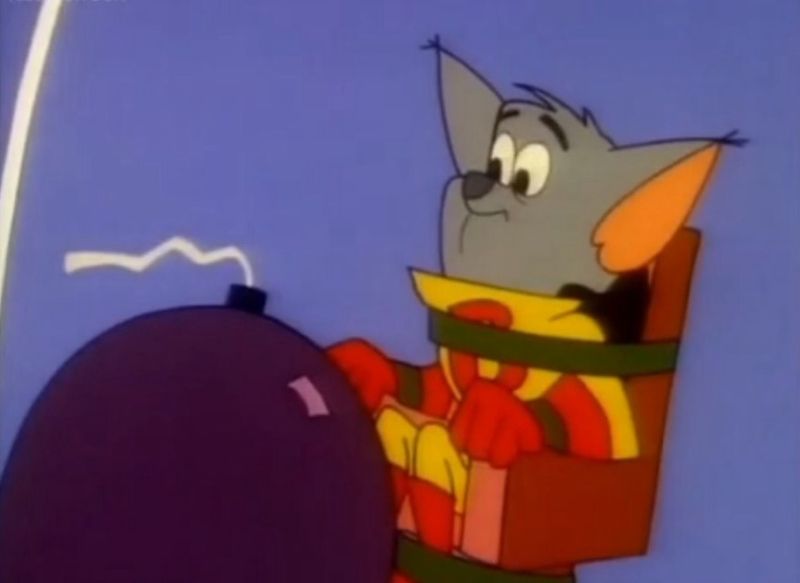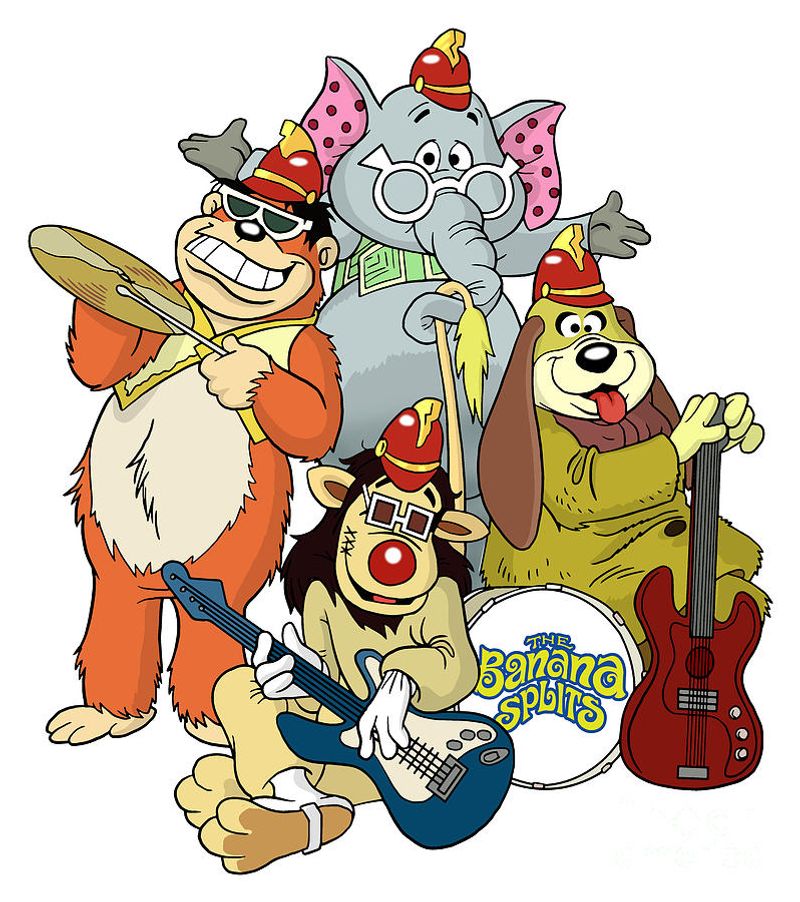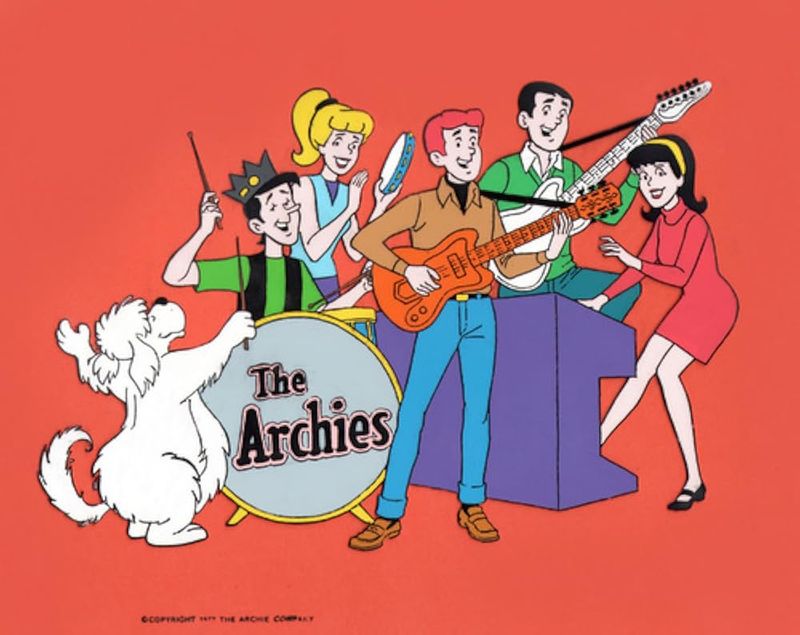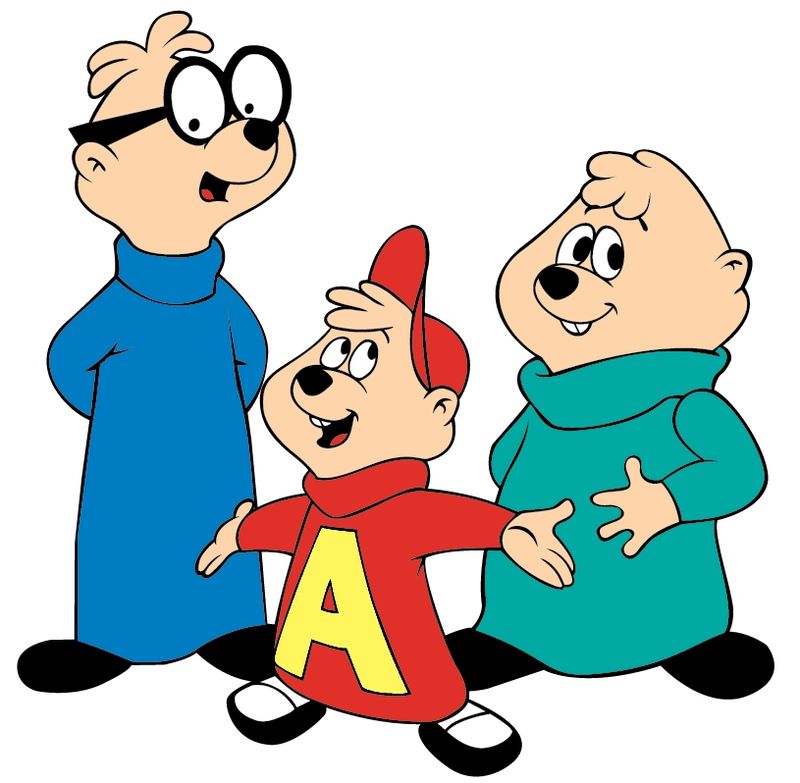The world of animation has evolved dramatically over the years, but some classic cartoons remain timeless gems. These iconic shows not only entertained past generations but also set the stage for modern animation.
Delve into this list of 29 cartoons that, despite their impact, have slipped under the radar of today’s kids. Each entry on this list offers a glimpse into a unique era of creativity, humor, and cultural significance.
1. Felix the Cat
Felix the Cat, with his iconic grinning face and magical bag of tricks, enchanted audiences in the silent film era. Emerging in the 1920s, Felix was a trailblazer in the world of animation.
He was one of the first animated characters to gain worldwide fame. The simplicity of his design and his clever antics captivated audiences of all ages. Felix’s adventures often involved solving problems with his wits and his magical bag.
Though he flourished in the silent film era, Felix the Cat remains an endearing character in animation history. His influence can be seen in countless characters that followed.
2. Mighty Mouse
Mighty Mouse soared into the hearts of viewers in the 1940s as a small but mighty superhero. Originally created as a parody of Superman, he became a symbol of courage and heroism.
Mighty Mouse’s adventures involved saving the day with his incredible strength and ability to fly. His classic catchphrase, “Here I come to save the day!” resonates with fans to this day.
The humor and action-packed episodes made him a favorite among children. Mighty Mouse’s legacy continues to inspire, proving that size doesn’t define a hero.
3. Popeye the Sailor
Popeye the Sailor has been a staple in the world of cartoons since the 1930s. Known for his love of spinach, which gives him superhuman strength, Popeye is a character defined by his unique speech and unwavering determination.
His adventures often involve rescuing his beloved Olive Oyl from the clutches of the villainous Bluto. With his signature squint and gravelly voice, Popeye has become an enduring symbol of strength and perseverance.
His humorous antics and memorable personality have left a lasting impact on generations of cartoon lovers.
4. Superman (1940s animated shorts)
In the 1940s, Superman made his animated debut in a series of groundbreaking shorts. These cartoons set a new standard for animation quality and storytelling.
With his classic red and blue costume, Superman battled villains and saved Metropolis from peril. The animation was praised for its art deco style and fluid motion, capturing the essence of the comic book hero.
These shorts introduced many to the Man of Steel, showcasing his strength and moral integrity. Superman’s animated adventures remain a testament to the character’s enduring appeal and influence.
5. Betty Boop
Betty Boop is a cultural icon from the 1930s, known for her flirtatious yet innocent persona. Created by Max Fleischer, she was one of the first female animated characters to lead a series.
Betty was modeled after the flapper girls of the roaring twenties, with her short curly hair and big eyes. Her cartoons often featured jazz music, adding to her allure.
Despite controversies surrounding her suggestive nature, Betty Boop remained a beloved figure. Her character broke barriers, embodying independence and charm, and remains a symbol of the jazz age.
6. Rocky and Bullwinkle
Rocky and Bullwinkle brought laughter and satire to television screens in the late 1950s and 1960s. This dynamic duo, consisting of Rocky, the wise-cracking flying squirrel, and Bullwinkle, the dim-witted moose, embarked on zany adventures.
Known for its witty humor and clever writing, the show often spoofed popular culture and politics. The series also featured memorable segments like “Fractured Fairy Tales” and “Peabody’s Improbable History.”
Its unique blend of humor and satire made it a favorite among both children and adults, leaving a lasting legacy in animation.
7. Underdog
Underdog, the canine superhero, first appeared in the 1960s with his charming rhymes and heroic deeds. Voiced by Wally Cox, Underdog was mild-mannered Shoeshine Boy’s alter ego.
When trouble arose, he transformed into the courageous Underdog to save the day. His catchphrase, “There’s no need to fear, Underdog is here!” echoed in every episode.
The show’s clever wordplay and engaging storylines captured audiences’ hearts. Despite his humorous and clumsy nature, Underdog’s determination and bravery made him an unforgettable hero of his time.
8. Jonny Quest
“Jonny Quest” debuted in the 1960s, introducing audiences to a world of adventure and mystery. The show followed young Jonny, his scientist father, Dr. Benton Quest, and their companions, including Race Bannon and Hadji.
Together, they embarked on thrilling missions across the globe. The series was groundbreaking, combining realistic animation with action-packed plots. Its pioneering use of sci-fi elements and suspenseful storytelling captivated viewers.
“Jonny Quest” remains a beloved classic, inspiring numerous adaptations and the imaginations of budding adventurers everywhere.
9. Speed Racer
Speed Racer zoomed onto the scene in the 1960s, becoming one of the first anime series to gain widespread popularity outside Japan. The series follows Speed, a talented young race car driver, and his adventures with the Mach 5.
Known for its fast-paced action and dramatic storylines, Speed Racer captivated audiences with its distinctive animation style. The supporting cast, including Racer X and Trixie, added depth to the series.
Speed Racer’s influence is evident in the continued popularity of racing-themed shows, making it a nostalgic favorite for many.
10. The Jetsons
The Jetsons offered a whimsical glimpse into the future when it premiered in the early 1960s. Set in a space-age world, the show followed the Jetson family as they navigated life with futuristic conveniences.
Flying cars, robotic helpers, and automated homes were everyday features. The show’s humor and imaginative portrayal of the future resonated with audiences. While it depicted a utopian future, it also cleverly satirized contemporary issues.
“The Jetsons” became a cultural icon, influencing how we envision the future of technology and family life.
11. The Flintstones
The Flintstones, the modern Stone Age family, first aired in the 1960s, charming audiences with its prehistoric twist on modern life.
Set in the town of Bedrock, the show followed Fred, Wilma, Barney, and Betty as they tackled everyday problems with a stone-age flair. Dinosaurs and rock-based gadgets added to the comedic appeal.
The Flintstones were a milestone in prime-time animation, paving the way for future animated sitcoms. Its clever humor and relatable family dynamics made it a favorite for generations, embodying timeless themes of friendship and family.
12. Scooby-Doo, Where Are You!
Scooby-Doo, Where Are You! premiered in 1969, introducing the world to the cowardly yet lovable Great Dane, Scooby-Doo, and the Mystery Inc. gang.
Fred, Daphne, Velma, Shaggy, and Scooby embarked on thrilling adventures to solve mysteries involving supposedly supernatural creatures. The show’s blend of humor, suspense, and memorable catchphrases captured viewers’ imaginations.
Scooby’s iconic line, “Ruh-roh!” and the unmasking of villains became hallmarks of the series. Scooby-Doo’s success has led to numerous spin-offs and adaptations, solidifying its place in pop culture history.
13. Josie and the Pussycats
“Josie and the Pussycats” rocked the 1970s with its blend of music, adventure, and humor. The show followed Josie and her band, the Pussycats, as they embarked on global tours that quickly turned into mystery-solving escapades.
The series was notable for its catchy music and diverse characters. With their unique leopard-print outfits and groovy tunes, the Pussycats became an iconic part of Saturday morning cartoons.
Despite its short run, the show left a lasting impact, influencing future music-themed animations and inspiring a live-action adaptation.
14. The Pink Panther Show
The Pink Panther Show captivated audiences in the 1970s with its suave and silent protagonist, the Pink Panther. Known for his cool demeanor and clever antics, this pink feline became an instant favorite.
Each episode featured delightful slapstick humor, often involving the bumbling Inspector Clouseau. The show’s distinctive theme music, composed by Henry Mancini, added to its charm.
The Pink Panther’s wordless adventures spoke volumes through expressive animation. This iconic character’s legacy endures, with the Pink Panther continuing to charm audiences of all ages today.
15. Schoolhouse Rock!
Schoolhouse Rock! educated and entertained kids in the 1970s with its catchy songs and animated lessons. Covering topics like grammar, math, science, and history, the series made learning fun and engaging.
Memorable tunes like “Conjunction Junction” and “I’m Just a Bill” became classroom classics. The show’s ability to simplify complex subjects through music and animation was groundbreaking.
Schoolhouse Rock! not only enhanced educational programming but also left a lasting cultural impact, with its songs still used as teaching tools today.
16. Fat Albert and the Cosby Kids
Fat Albert and the Cosby Kids brought life lessons and laughter to 1970s audiences. Created by Bill Cosby, the show followed Fat Albert and his friends as they navigated challenges in their urban neighborhood.
Each episode delivered valuable messages about friendship, responsibility, and empathy. The show’s unique blend of humor and morality made it a standout.
With its diverse cast and relatable stories, Fat Albert became a beloved figure in children’s programming. Its impact is evident in its continued recognition as a pioneer for positive representation in media.
17. Mister Magoo
Mister Magoo, with his comically poor eyesight, first appeared in the late 1940s and became a beloved character throughout the decades. This short-statured, elderly man often found himself in hilarious predicaments due to his nearsightedness.
Despite his visual impairment, Mister Magoo’s unfaltering confidence and likable personality endeared him to audiences. The show’s humor lay in Magoo’s obliviousness to the chaos around him, leading to amusing misunderstandings.
Mister Magoo’s adventures remain a charming example of classic cartoon comedy, celebrated for its slapstick humor and timeless appeal.
18. The Herculoids
The Herculoids, a unique blend of sci-fi and fantasy, captivated audiences in the late 1960s. This animated series followed the adventures of a family and their diverse group of fantastical creatures.
On the distant planet of Amzot, they battled various threats using their unique abilities. The show’s imaginative world and characters, like Zok the dragon and Igoo the rock ape, intrigued viewers.
The Herculoids’ focus on teamwork and adventure made it a standout series. Its legacy lives on as a beloved classic, remembered for its creativity and action-packed episodes.
19. Space Ghost
Space Ghost made his debut in the 1960s as a superhero defending the galaxy from evil. With his sleek white suit and array of gadgets, Space Ghost fought against villains with the help of his sidekicks, Jan and Jace.
The series was noted for its imaginative sci-fi elements and thrilling action sequences. Space Ghost’s adventures combined classic heroism with futuristic themes, captivating young audiences.
His character later gained a cult following with the parody talk show “Space Ghost Coast to Coast,” solidifying his place in pop culture history.
20. Hong Kong Phooey
Hong Kong Phooey, the kung-fu-fighting canine, entertained audiences in the 1970s with his comedic crime-fighting antics. Voiced by Scatman Crothers, this janitor-turned-superhero tackled villains using his (often clumsy) martial arts skills.
Each episode featured Hong Kong Phooey’s humorous blunders and clever disguises. Despite his comedic incompetence, he always managed to save the day, often with the help of his loyal sidekick, Spot.
The show’s lighthearted approach to crime-fighting and martial arts made it a beloved classic, remembered for its catchy theme song and slapstick humor.
21. The New Adventures of Gilligan
The New Adventures of Gilligan brought the beloved castaways of “Gilligan’s Island” back to television in animated form during the 1970s.
This cartoon continuation followed Gilligan, the Skipper, and their fellow islanders as they encountered humorous obstacles while trying to escape the island. The series retained the charm and comedic dynamics of the original live-action show.
Gilligan’s well-meaning yet bumbling nature continued to be a source of laughs. The animated format allowed for more fantastical scenarios, providing fans with fresh adventures of this iconic group.
22. King Leonardo and His Short Subjects
“King Leonardo and His Short Subjects” premiered in the early 1960s, offering a series of comedic vignettes centered around the lion king and his kingdom.
The show featured King Leonardo’s humorous attempts to rule his animal subjects, often thwarted by his bumbling minister, Odie Colognie. The series included various segments, each with its own unique characters and comedic style.
Its blend of lighthearted humor and charming animation made it a popular choice for Saturday mornings. King Leonardo’s antics remain a nostalgic favorite, cherished for its whimsical storytelling.
23. George of the Jungle
George of the Jungle, a parody of Tarzan, swung onto screens in the late 1960s with his comedic jungle adventures. Known for his catchy theme song, George was a lovable, clumsy hero who always found himself in humorous predicaments.
The show’s slapstick humor and playful animation appealed to audiences of all ages. George’s misadventures, often involving his faithful elephant Shep and his friends, brought laughs and entertainment.
Despite his lack of grace, George’s bravery and good nature made him a memorable character in the world of classic cartoons.
24. The Woody Woodpecker Show
The Woody Woodpecker Show introduced audiences to the rambunctious antics of Woody, a mischievous red-headed woodpecker. Created by Walter Lantz in the 1940s, Woody became famous for his distinctive laugh and cheeky personality.
The show featured Woody’s escapades as he outwitted adversaries with cunning and charm. Woody Woodpecker’s slapstick humor and lively animation made him a beloved character.
The series’ success led to numerous spin-offs and appearances, establishing Woody as an enduring figure in cartoon history, remembered for bringing laughter and joy to viewers worldwide.
25. Courageous Cat and Minute Mouse
“Courageous Cat and Minute Mouse” debuted in the early 1960s, offering a playful take on superhero tales. Created by Bob Kane, the duo battled crime in Empire City.
Courageous Cat, with his arsenal of gadgets, and his sidekick, Minute Mouse, faced off against colorful villains. The show parodied popular superhero tropes, delivering lighthearted action and humor.
Its catchy theme and engaging plots captured the imaginations of young viewers. The series remains a charming example of classic animation, delighting audiences with its whimsical take on heroics.
26. Batfink
Batfink, the winged superhero, took flight in the 1960s, captivating audiences with his catchphrase, “Your bullets cannot harm me, my wings are like a shield of steel!”
The show, a parody of Batman, followed Batfink and his sidekick, Karate, as they thwarted villains. Known for its humor and action-packed episodes, Batfink’s adventures were filled with clever gadgets and puns.
Despite the show’s short run, Batfink’s unique character and memorable catchphrases left a lasting impression, securing a place in the hearts of classic cartoon enthusiasts.
27. The Banana Splits
The Banana Splits combined live-action and animation in the late 1960s, offering a mix of music, comedy, and cartoons. The show featured four costumed animal characters—Fleegle, Bingo, Drooper, and Snorky—who performed wacky sketches and catchy songs.
Their zany antics and vibrant personalities captivated young audiences. The series also included animated segments, adding variety and excitement.
The Banana Splits’ energetic performances and playful humor made it a beloved part of children’s programming, remembered for its fun-filled chaos and memorable theme song.
28. The Archie Show
The Archie Show, debuting in the late 1960s, brought the beloved comic book characters to life in animated form. Archie Andrews and his friends navigated the ups and downs of teenage life in Riverdale, filled with humor and catchy music.
The show was notable for introducing “Sugar, Sugar,” a hit song that topped the charts. With its relatable characters and lighthearted stories, The Archie Show captured the essence of adolescent adventures.
Its success paved the way for numerous spin-offs, solidifying Archie’s place in pop culture.
29. The Alvin Show
The Alvin Show introduced Alvin and the Chipmunks to television audiences in the early 1960s. The series showcased the musical antics of Alvin, Simon, and Theodore, managed by their patient father figure, Dave.
Known for their high-pitched voices and mischievous behavior, the Chipmunks became a sensation. Each episode featured catchy songs and humorous stories, charming viewers of all ages.
The Alvin Show’s success led to a lasting legacy, resulting in numerous adaptations and renewed interest in the adorable chipmunks, making them enduring icons of entertainment.
